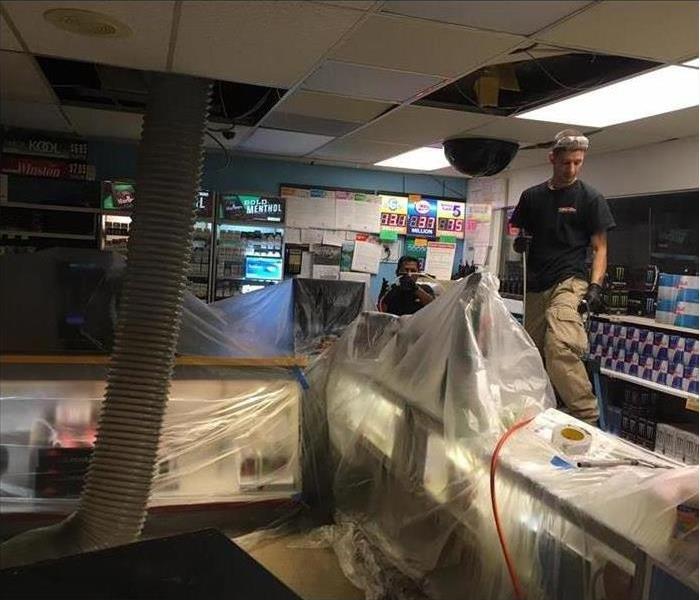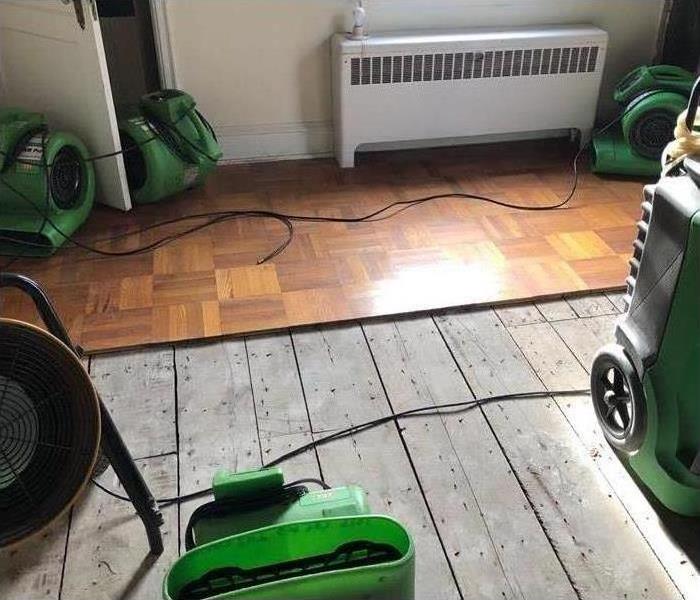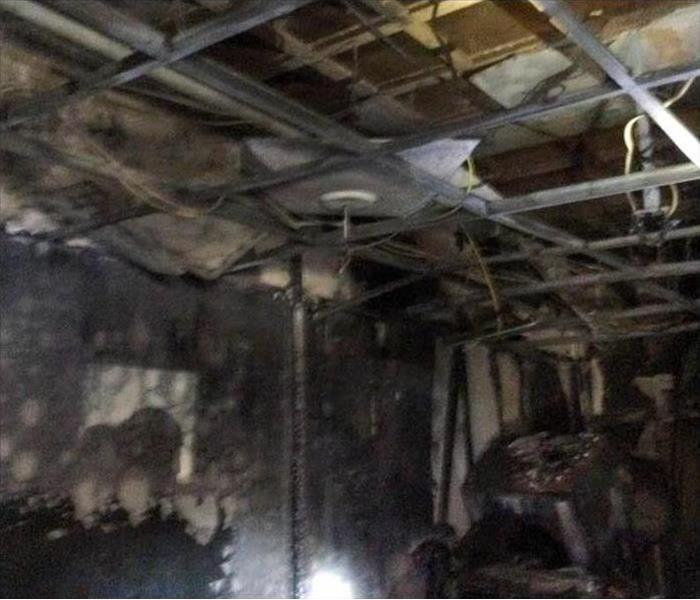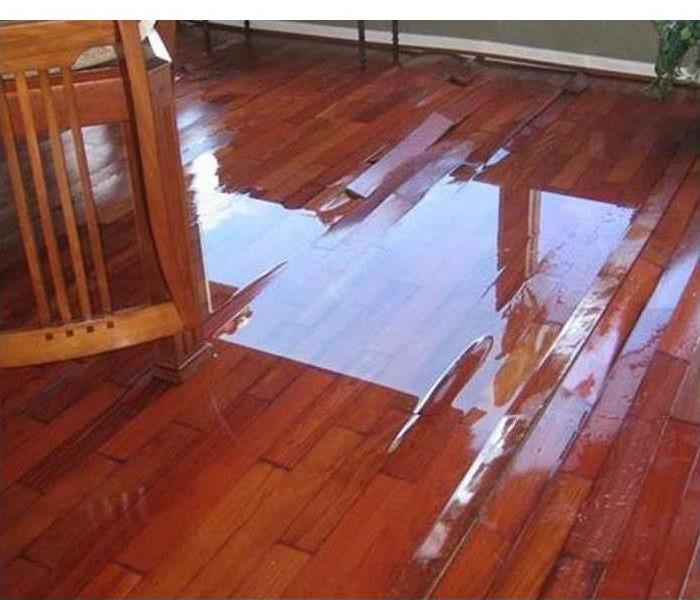Recent Commercial Posts
Fire Commercial Cleanup Process
10/7/2022 (Permalink)
 Fire damage in a business.
Fire damage in a business.
How To Properly Clean After a Fire
When fire and smoke damage occurs, many people assume that the damage can be cleaned up easily. This is not always the case. In fact, some soot is corrosive and will cause major damage if not addressed immediately by a professional team of experts like SERVPRO® of Egg Harbor/Ventnor City.
The process to handle fire damage in business must be done correctly or it could cause further issues down the line. Below are some steps on how to properly clean up after a fire:
Soot and smoke damage can cause major issues if not addressed immediately.
Soot and smoke damage in the home can cause major problems. If left unattended, they can lead to severe structural damage and even the need to replace damaged items. That's why you'll want to act quickly if a fire has occurred in your home—soot and smoke can wreak havoc on your belongings if you don't address them immediately.
Smoke and soot can linger long after a fire has been put out.
Smoke and soot can linger long after a fire has been put out. The longer you wait to clean up, the greater the damage will be to the structure, its contents, and its occupants.
Some soot is corrosive, meaning it can eat through surfaces and leave rust stains on walls, floors, and ceilings.
It's important to note that some soot is corrosive, meaning it can eat through surfaces and leave rust stains on walls, floors and ceilings. If you see rust stains after your fire cleanup company has cleaned up your property, you may need to get the interior of your home re-painted with a special coating designed for use after a fire event.
SERVPRO® of Egg Harbor/Ventnor City is always here to help with fire restoration services any time you need them most.
SERVPRO® of Egg Harbor/Ventnor City is a locally owned and operated business that has been serving the community for over 30 years. SERVPRO of Egg Harbor/Ventnor City has one of the most advanced fire damage restoration services in the industry, with over 1,400 Franchises nationwide.
If you have recently suffered fires damages or need help with smoke removal, please contact us today!
Fire commercial cleanup process; removing smoke and soot from business
The fire commercial cleanup process is an important part of dealing with a fire, not only in terms of helping to restore your business but also in improving the overall safety of the building. When it comes to fire commercial cleanup, there are several steps that you may need to take. First and foremost, you'll want to make sure that no one was hurt or injured during the incident. If someone was injured by smoke inhalation or other injuries related to fires, they will likely need immediate medical attention—you should call 911 immediately if this is the case. It's also important for you (or whoever is responsible for running your business) to check with your insurance company about any coverage issues that may arise from this event; if someone has been injured due to negligence on your part (such as leaving hazardous materials near heat sources), then this could put some serious strains on your financial situation down the road!
Fire commercial cleanup process; removing smoke and soot from business
Smoke and soot damage can cause major issues if not addressed immediately. SERVPRO® of Egg Harbor/Ventnor City is always here to help with fire restoration services any time you need them most.
Everything To Know About Water Damage Restoration
8/11/2022 (Permalink)
 Water damage restoration in Pleasantville, NJ
Water damage restoration in Pleasantville, NJ
If you notice the supply line leaking in your commercial property, you may not think it is a big deal. However, the leak could eventually cause the pipe to break. This, in turn, could create a massive flood inside your Pleasantville, NJ, building.
Pipe burst cleanup involves more than just wiping away the excess water. Carpet and drywall must be dried thoroughly to stop the growth of bacteria and mold. For best results, you should contact a remediation company following a water disaster.
Water Restoration Process
Water restoration professionals will do what they can to salvage your building. The experts should follow the below process.
1. Assessment and Inspection
The specialists will start by surveying the water damage and classifying the water loss. The pros can then estimate the cost of the repairs.
2. Water Removal
The experts will next use powerful vacuums and pumps to extract the standing water from the property. They may also remove hardwood floors or carpets if necessary.
3. Dehumidifying and Drying
Dehumidifiers and air movers should eliminate any lingering wetness. The pipe burst cleanup specialists will monitor the moisture levels in the floors and walls to determine when the building is sufficiently dry.
4. Sanitizing and Cleaning
After the water is gone, the professionals will use various cleaning techniques to remove any contaminants. This process may include mold remediation, as well.
5. Restoration
Finally, the cleanup pros will return your building to the way it was before the flood. This could require extensive reconstruction.
Water Restoration Certification
Of course, not all water cleanup companies are the same. The experts you hire should be properly trained. Otherwise, they could leave your property in worse shape than it was before they arrived.
Look for specialists who are members of the Institute of Inspection, Cleaning and Restoration Certification (IICRC). This regulatory agency provides industry standards for remediation experts.
A massive supply line break does not have to destroy your business. Certified pipe burst cleanup professionals will know the right techniques for restoring a flooded building.
What Steps Are Necessary for Commercial Smoke Cleanup After a Fire?
5/3/2022 (Permalink)
 SERVPRO of Egg Harbor and Township offers fire restoration and cleanup services.
SERVPRO of Egg Harbor and Township offers fire restoration and cleanup services.
Steps for Fire Restoration
When a fire affects your Scullville, NJ, commercial property, the cleanup process may feel overwhelming. Not only must you contend with flooding from fire hoses and scorched building materials, but multiple floors may also have serious smoke damage. This may all seem difficult to handle, but learning the steps a fire restoration company may take to repair the damage can have you feeling more confident about returning to business operations faster.
Assessment
Once a contractor or the fire department deems the building safe to enter, fire restoration technicians will assess your commercial property and note which services you will need. Depending on the severity of the fire, you may require multiple needs, including:
- Smoke cleaning
- Removal of damaged building materials
- Gathering and removal of fire debris
The technicians will likely keep you up to date about which services your building needs so you can calculate costs and report them to your insurance company
Appraising Smoke Damage Needs
Smoke can cause a great deal of damage to a variety of items inside your business, such as furniture, inventory and electronic equipment. Porous objects will absorb the smoke and its odor, which can discolor and tarnish metals, fabrics and glass. Smoke can also cause some items to yellow, which can make them appear dirty.
Specialized Cleaning
When your building suffers smoke and soot damage, a fire cleanup and restoration service can bring in specialized cleaning materials, such as ozone machines, to clean soot and odors from each room. After a serious fire, smoke odor cannot be cleaned away with room deodorizers, as they are usually not powerful enough to eliminate these smells completely.
Cleaning up after a fire at your Scullville, NJ, business can feel like a daunting task, especially when it comes to smoke damage and ridding your building of the odors a fire can cause. The more you understand the cleanup process, the more confident you can feel about the outcome.
5 Mold Hazards in Dry Climate Buildings
3/28/2022 (Permalink)
5 Mold Hazards in Dry Climate Buildings
Mold requires moisture for growth. A dry outdoor climate does not necessarily mean that mold is not likely to flourish indoors under certain conditions. Any of these five sources of moisture can sustain black mold growth within a structure in Margate, NJ.
1. Air Conditioning
When it is hot outside, a building air conditioner may run constantly. The cooling coil, condensate drain pan and insulation in an AC cabinet or ductwork may develop mold without regular maintenance.
2. Bathroom Mold
Commercial bathroom facilities are another common location for mold cleanup. Supply lines that can leak or burst or drain lines that back up raise mold risks in these areas. Buildings with showers in addition to toilets may be more prone to mold.
3. Blocked Drainage
Blocked drain lines can cause mold to form in and around bathrooms as well as on the lowest level of a building. Backed-up toilets, bathroom drains and basement floor drains are the main culprits inside, while poor rain and runoff drainage outdoors can also raise mold risks.
4. Plumbing Leaks
Black mold may be prone to grow anywhere moisture is readily available. A slow leak can keep materials wet long enough that this potentially toxigenic species or other types of mold form. Shut off the water supply as soon as you notice a leak and contact a plumber.
5. Constant Condensation
Condensation may build up in a structure due to the difference between indoor and outdoor temperatures. Droplets may also form around pipes, water-based appliances or structural features and necessitate extensive mold remediation.
Any of these factors can support the growth of mold in a building in Margate, NJ, such as black mold. It is important to have air conditioning and plumbing systems inspected on a regular basis and keep bathrooms and other areas clean and dry to prevent or control a mold problem.
The Categories of Water Damage
3/28/2022 (Permalink)
 Wooden floor damaged by water.
Wooden floor damaged by water.
Categories of Water Damage
If your business in Pleasantville, NJ, has an issue with the plumbing such as a supply line problem or burst pipe, you may have many questions about how to keep your building and your employees safe, such as if this is clean water or black water. In these events, it's important to know what type of water damage you have in order to know how to properly begin your building's restoration.
The category of water damage depends on the severity of the water damage, including the level contamination of the water. Understanding what category of water damage you have is imperative to understanding how to get your building back to its original state as soon as possible.
Category 1
As the water damage categories range in severity, it starts with category one. This is the least severe of the three types. Category one is water that does not contain any contaminants. There are many ways to tell if you have category one water damage, including water damage from any of the following:
- Malfunctioning appliances
- An overflowing sink
- A broken toilet
- Melted ice or snow
Even with clean water damage, the clean-up process is still important to do promptly. Preventing any lasting water damage is imperative to preserving your building.
Category 2
Category two, or gray water, is water damage from water that is contaminated with chemicals or other material. There are many sources of category two water damage, such as water from a broken dishwasher or washing machine, a sprinkler malfunction or a toilet that is overflowing with urine. Gray water can also be a result of category one water from a broken pipe or other water issue, that has been left out too long.
Category 3
Category three, or black water, is the most severe form of water damage. Blackwater can contain bacteria and viruses and can come from sewage, rising seawater or floodwaters.
Knowing the three categories of water damage is important to the restoration process. It's important to know the difference between clean water, black water and gray water to prevent lasting damage.
Four Steps to Protect Your Building from Flooding
2/5/2022 (Permalink)
Four Steps to Flood-Proofing Your Building
If you are in a flood zone, then it is likely in your best interest to prepare your business for the potential of flood damage. There are specific steps you can take to reduce the risk of property loss. However, no amount of preparation can guarantee no damage. Follow the four steps below to minimize your potential property loss.
1. Elevate Critical Equipment
While surge protectors can help save electrical equipment from electrical storm damage, it does little when it comes to floods. To protect computers and other sensitive equipment, you should unplug and elevate the items.
2. Sandbag Doors and Windows
Most flood damage occurs because of unprotected entry points. Therefore, it is necessary to protect all doors and windows. You can accomplish this by building up several barricades of stacked sandbags. These barricades should divert the water away from all points of entry.
3. Secure Furniture
Flooding turns tables, chairs and other nonsecure items into dangerous missiles. Floating furniture can damage windows, doors and even people. It is important to secure all furniture, inside and outside, by weighing it down or moving it to higher ground.
4. Establish an Emergency Response Plan
A disaster restoration specialist in the Northfield, NJ, area will likely offer free assessments of your business. During these assessments, they may discuss how and when you would like their company to respond. A final plan will mean that when a disaster occurs, your chosen restoration team will take action immediately, taking the stress away from you during that time.
Protecting your business from flooding is not necessarily about eliminating all risks of water damage, it is about reducing those risk so that recovery is quicker and easier. A flood is devastating and can interrupt business processes for weeks or months, depending on the level of loss. Be sure to follow the above steps to reduce potential flood damage losses.




 24/7 Emergency Service
24/7 Emergency Service



